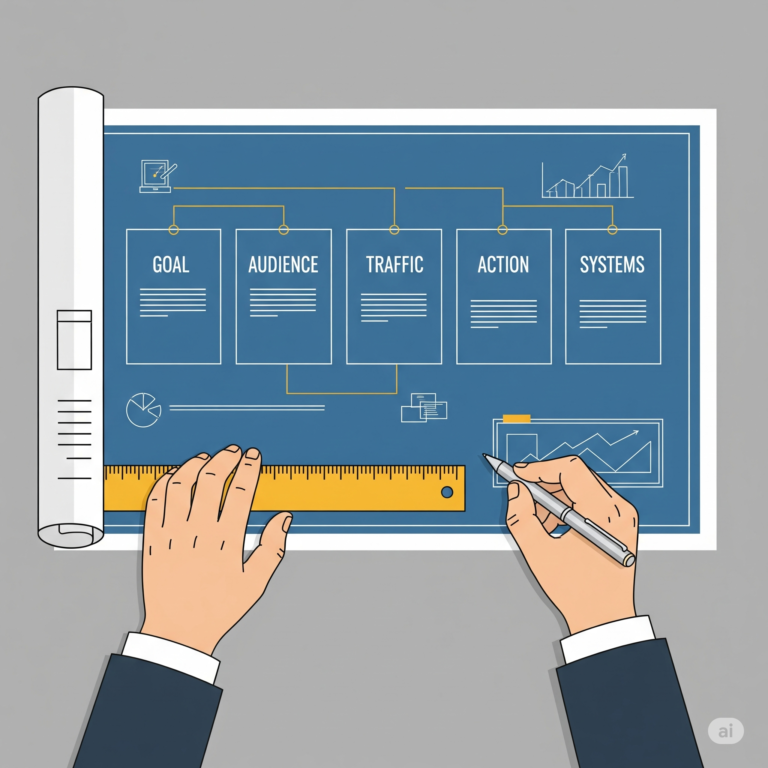
It’s a common declaration in meetings across Bahrain: “We need a new website.” It’s often seen as the solution to a host of business problems—from slumping sales to a dated brand image. While a new website can indeed be a powerful catalyst for growth, rushing into a redesign without a clear strategy is one of the most common and expensive mistakes a business can make.
The result is often a beautiful, expensive website that does little to improve the bottom line. It becomes a digital brochure, not the powerful business tool it’s meant to be.
Before you approach a single web designer or spend a dinar, your leadership team must answer these five critical strategic questions first.
Question 1: What is the #1 Job of This Website?
A website that tries to be everything to everyone will ultimately fail at everything. You must decide on its single most important job. Is the primary goal to:
- Generate qualified leads for your sales team?
- Sell products directly through e-commerce?
- Build brand credibility and act as a resource hub for your industry?
- Attract top talent and serve as a recruitment tool?
Your answer will dictate the entire structure, design, and content of the site. A lead-generation site needs prominent contact forms and case studies, while an e-commerce site needs high-quality product pages and a seamless checkout process. Define the primary goal first.
Question 2: Who, Exactly, Are We Building This For?
The most common mistake in web design is building a site for the CEO or the marketing team. You must build it for your Ideal Customer.
- Who is your target audience? A website targeting corporate clients in Manama’s financial district should have a different tone, language, and design than one targeting young families across the GCC.
- What are their biggest pain points? What questions are they trying to answer? Your website’s content and navigation should be built around solving their problems, not just listing your services.
Question 3: How Will People Find the Website?
The “if you build it, they will come” philosophy is a recipe for failure. A website is invisible without a clear traffic strategy. You must have a plan to drive relevant visitors to the site from day one. Will your traffic come from:
- Search Engine Optimization (SEO): Being found on Google when people search for your services?
- Performance Marketing: Running targeted ads on Google, Instagram, or LinkedIn?
- Content Marketing: Attracting visitors through valuable blog posts and guides?
- Social Media: Driving traffic from your existing social channels?
Your traffic strategy will influence the very structure of your website and the content you need to create.
Question 4: What Action Do We Want Visitors to Take on Every Page?
A visitor should never land on a page and think, “What now?”. Every single page must have a clear and compelling Call-to-Action (CTA) that guides the user to the next logical step.
Whether it’s “Request a Quote,” “Download Our Case Study,” “Book a Free Consultation,” or “Add to Cart,” a powerful CTA turns a passive browser into an active lead. The design and copy should be built around encouraging these specific actions.
Question 5: How Will This Website Integrate with Our Business Systems?
This is the question that separates a basic website from a truly efficient business asset. A modern website should not be an isolated island. It should be the hub of your operations, seamlessly connected to your other systems.
- Will new leads from your contact form automatically feed into your CRM (like Zoho)?
- If it’s an e-commerce site, will it sync with your inventory and accounting software (like Zoho Books)?
Thinking about these integrations beforehand saves thousands of dinars and countless hours of manual work down the line. It transforms your website from a simple marketing tool into the core of an automated, efficient business engine.
Conclusion: A Website is an Outcome, Not an Output
Answering these five questions transforms your project. You are no longer just “getting a website made”; you are “building a strategic asset designed to generate leads and integrate with our operations.”
The design and development are the final steps of the process, not the first. The real work is in the strategy that comes before.
Before you hire a web designer, talk to a business strategist.
At ASM Bahrain, we help you answer these critical questions to build a comprehensive digital strategy before a single line of code is written. Contact us for a strategic website roadmap session and ensure your investment delivers real results.
Hello@asmbahrain.com
